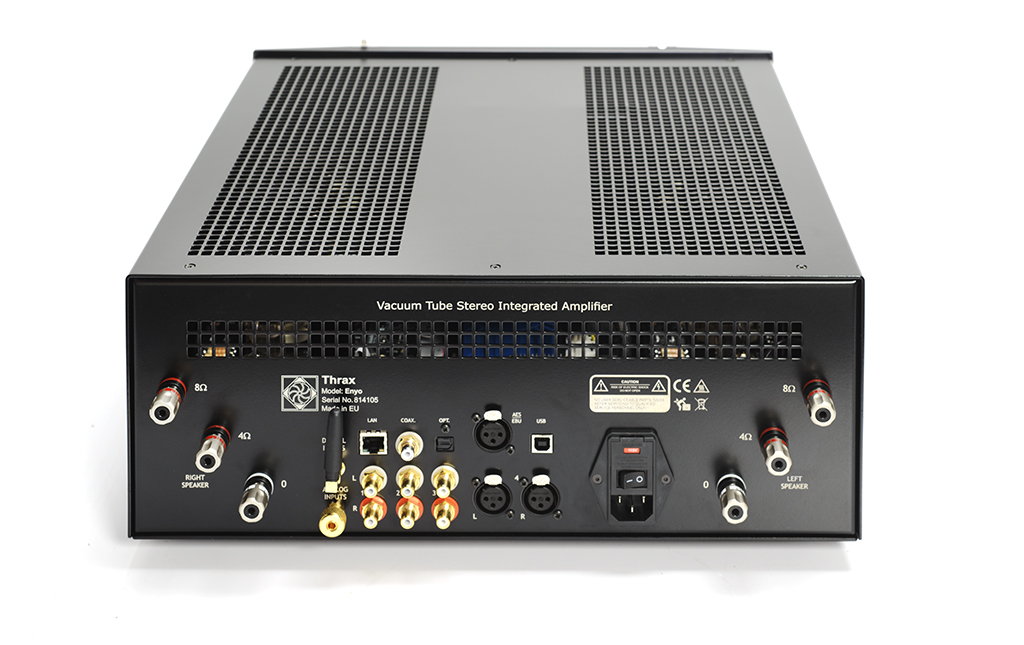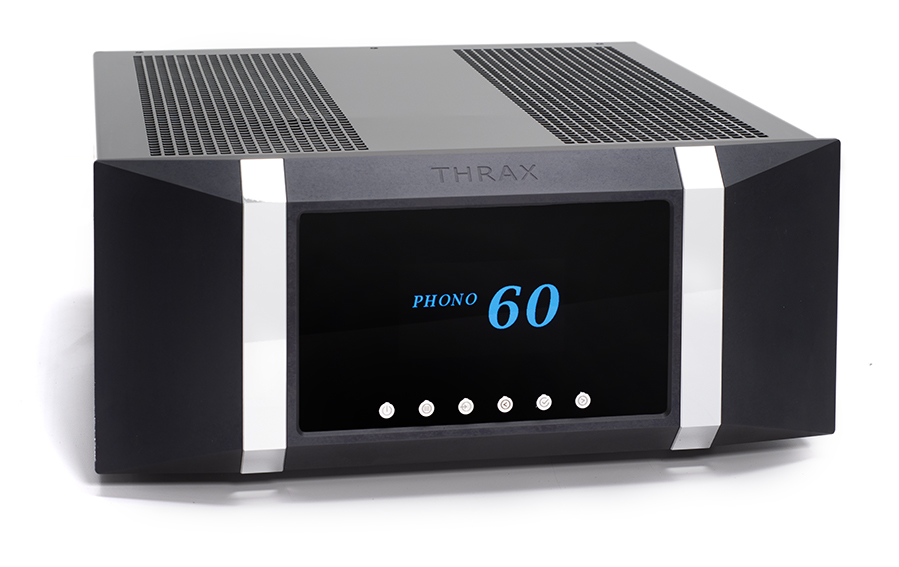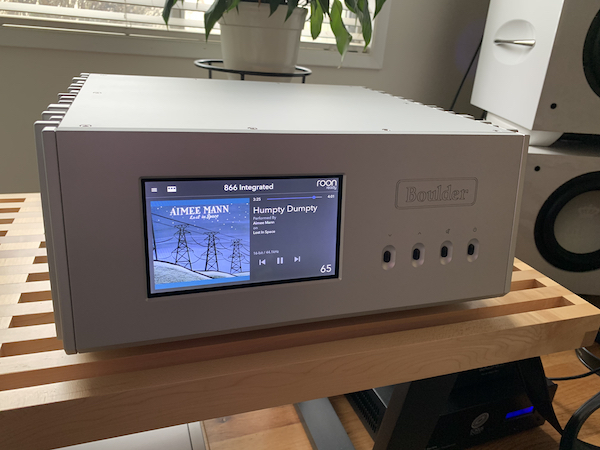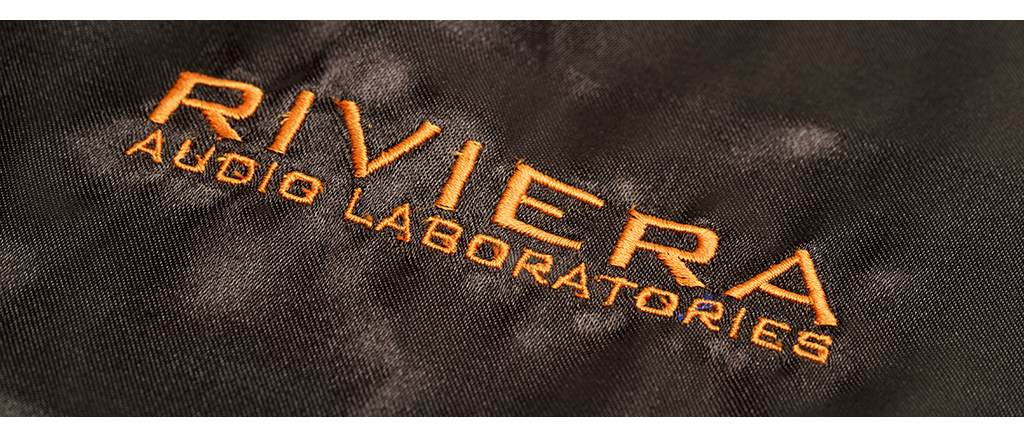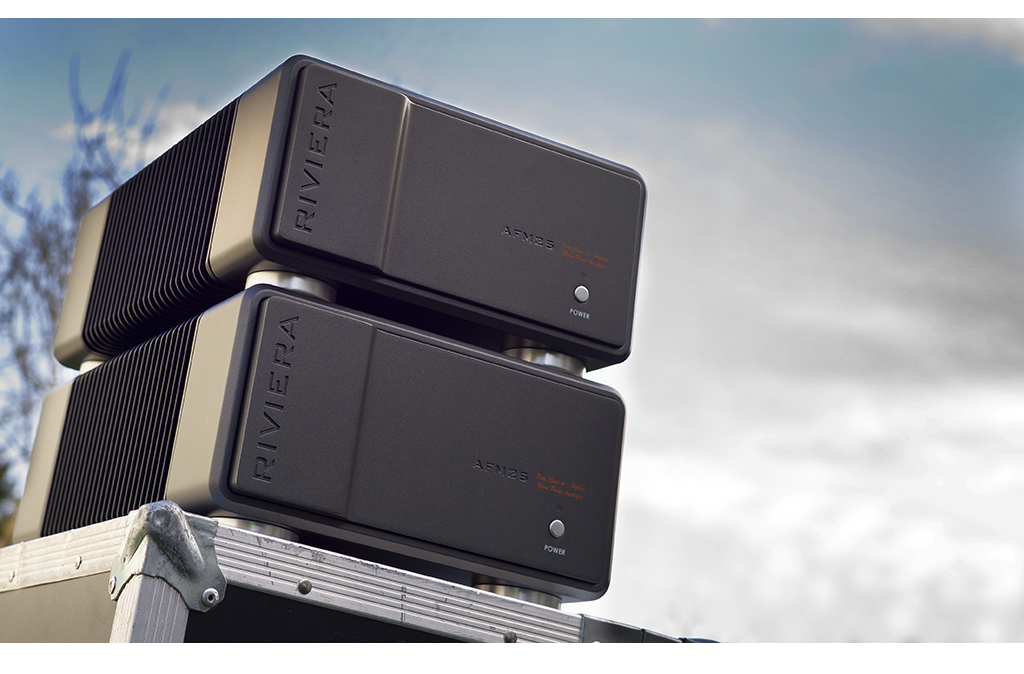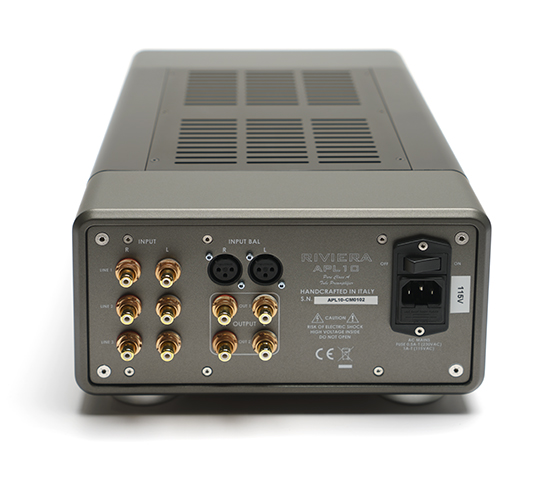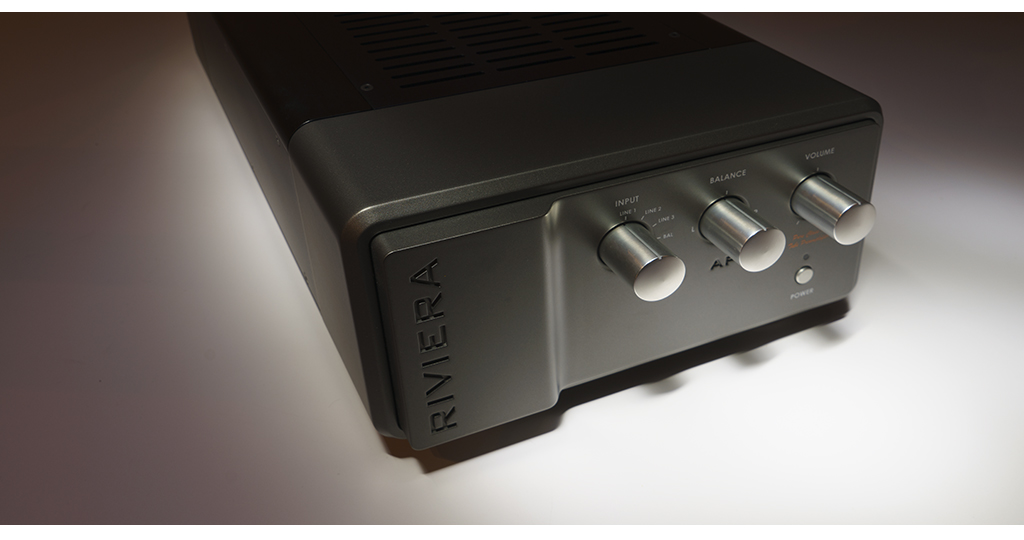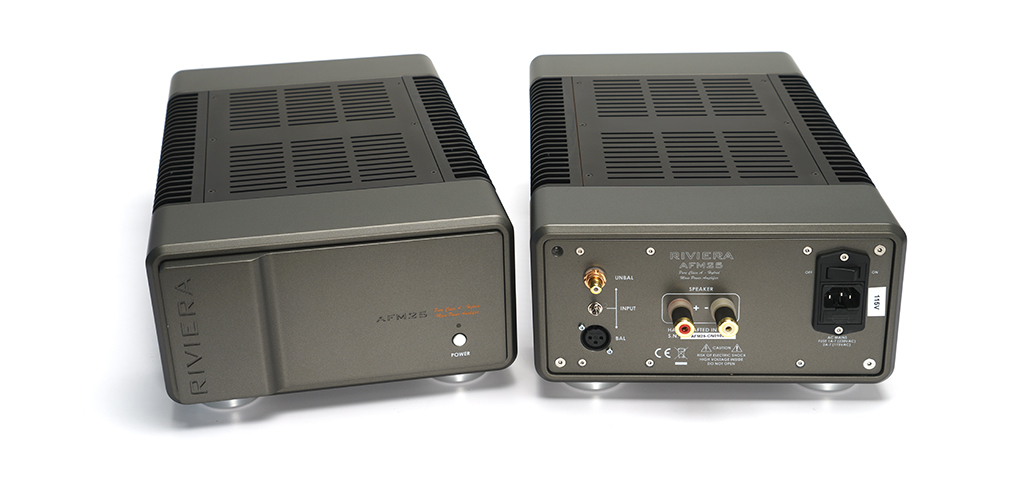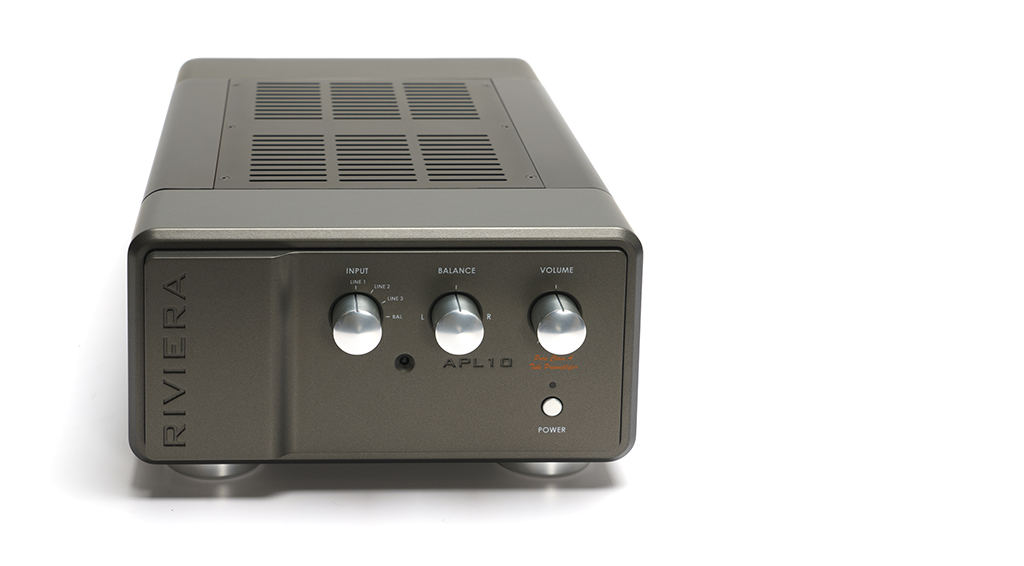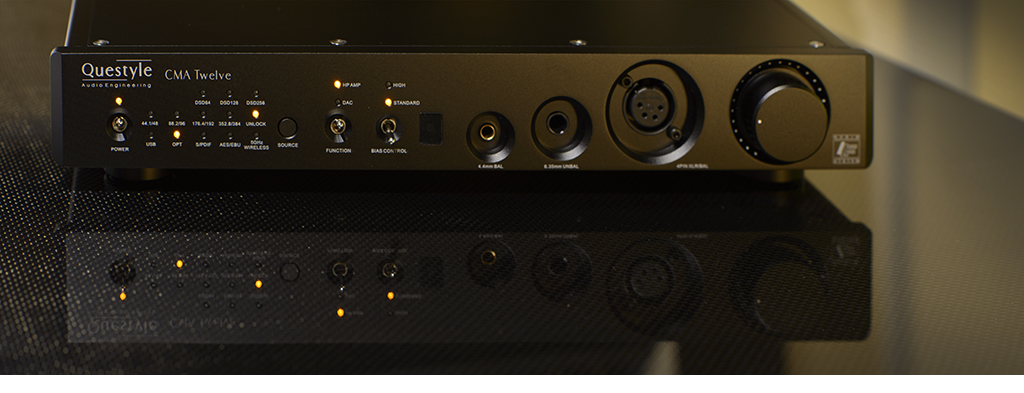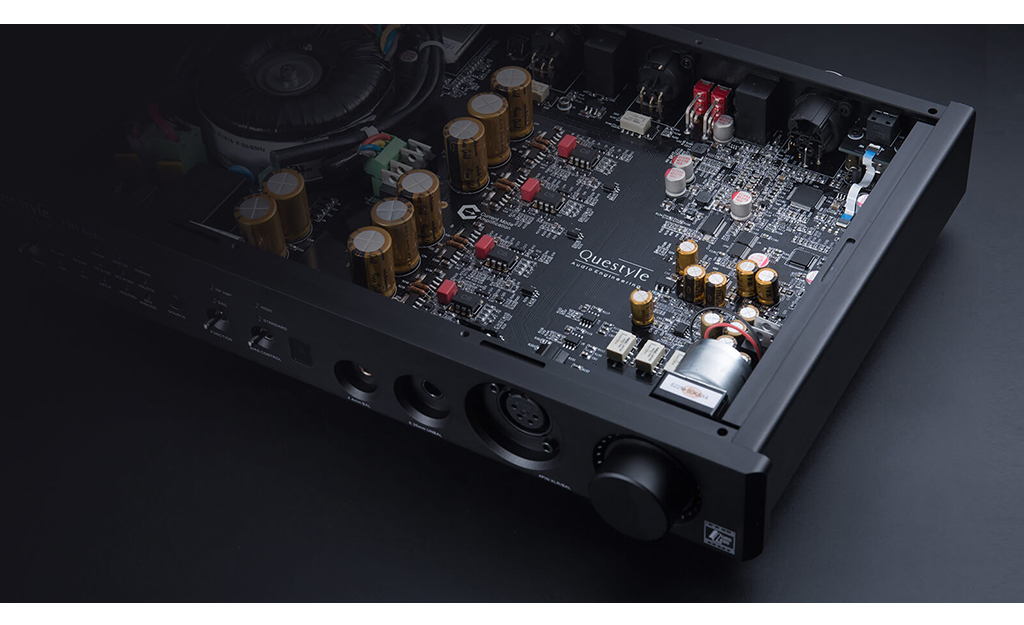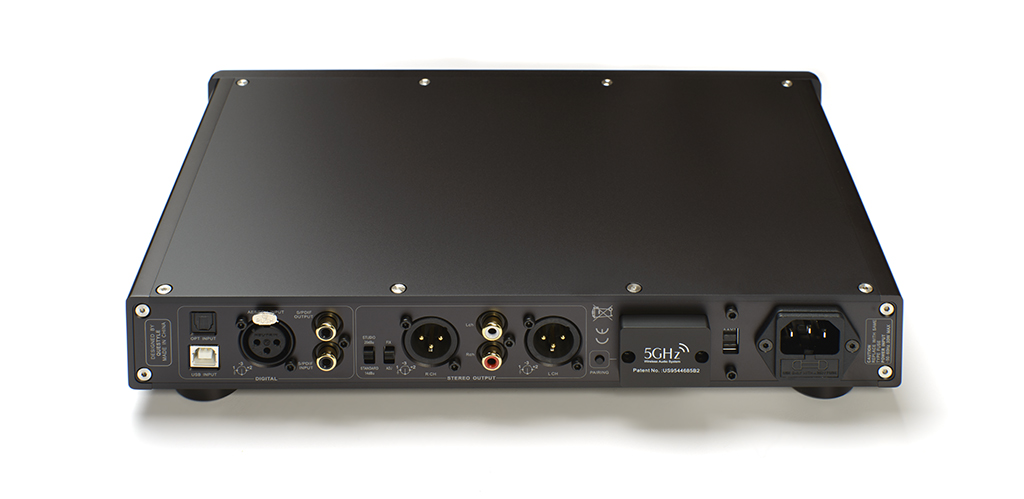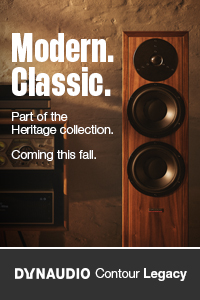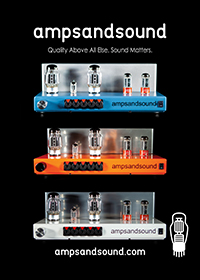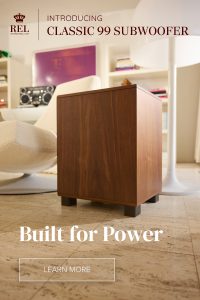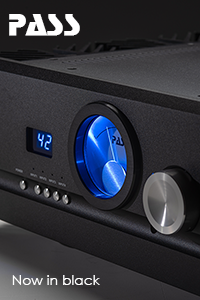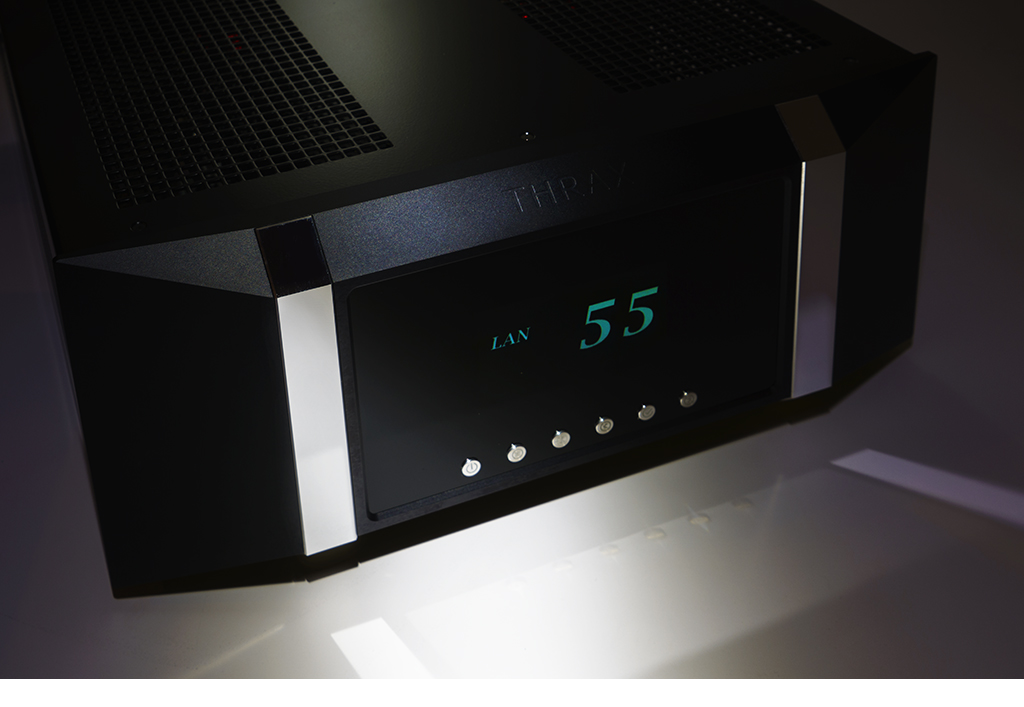 Ironically, Anja Garbarek’s “Big Mouth” truly shows off what a big voice the Thrax Enyo integrated amplifier delivers. The Enyo shares the same aesthetic as the flagship models, with a familiar front panel look.
Ironically, Anja Garbarek’s “Big Mouth” truly shows off what a big voice the Thrax Enyo integrated amplifier delivers. The Enyo shares the same aesthetic as the flagship models, with a familiar front panel look.
Still, the engineering team has managed to combine a 50-watt push-pull amplifier with line stage for $12,500, allowing you the ability to add digital and analog phono capabilities as you need. (at $3,500 and $1,175 respectively) If you’ve had the opportunity to experience the mighty Thrax 300B monoblocks, it only takes a few seconds to realize how much of that essence is captured here. They’ve managed to hold the line on the cost by making the case cover wrapping around the amplifier from a piece of folded steel with ventilation holes. It’s an excellent tradeoff, as you won’t see anything but the lovely front panel when the Enyo is tucked in an equipment rack. Of course, the top components have massive aluminum panels, but this is a highly effective way to cut costs without cutting performance.
As much talk as there is about the resurgence of vinyl and now the compact disc, barely anyone is talking about what a powerful comeback the integrated amplifier is making lately. For years, the thought of an integrated was somehow considered less-than by obsessed audiophiles. Today, with so many manufacturers concentrating their efforts on single chassis designs, the results have been fantastic and a treat for the music lover that craves high-performance audio in a more compact form factor.
A new definition
Thrax calls the Enyo a “modular audiophile system,” a perfect description. Importer Ozan Turan of High End by Oz sends our review sample fully configured. Some will argue that everything on one chassis is a lousy idea because analog and digital systems interfere with each other and make for potential obsolescence issues. Thrax succeeds brilliantly here, and in the context of the performance offered, should offer years if not decades of satisfaction.
You can look at this from another angle. If a robust 50-watt per channel tube amplifier fits your needs, but you either have analog and digital front ends in place, you only need to pay for the performance you require. A music lover with a vast record collection wanting to dabble in streaming will be more than accommodated by the digital section and vice versa. The streaming music lover who wants to pick up a decent turntable and a few hundred albums needs no more than the internal phono stage. Those maniacal about both can opt for the amplifier alone.
However, the Enyo is a fantastic solution for the music lovers we’ve seen that want a high-performance audio solution without complication. If you’d like a substantial helping of cost no object audio but want to do so with a minimal box count, the Enyo could be the perfect fit. For example, a fully equipped Enyo, a nice turntable in the $2,500 range, and your favorite pair of $10,000 – $15,000 speakers will keep you entertained forever. Yet the Enyo is of high enough quality that it is not out of its element with some of the world’s finest loudspeakers.
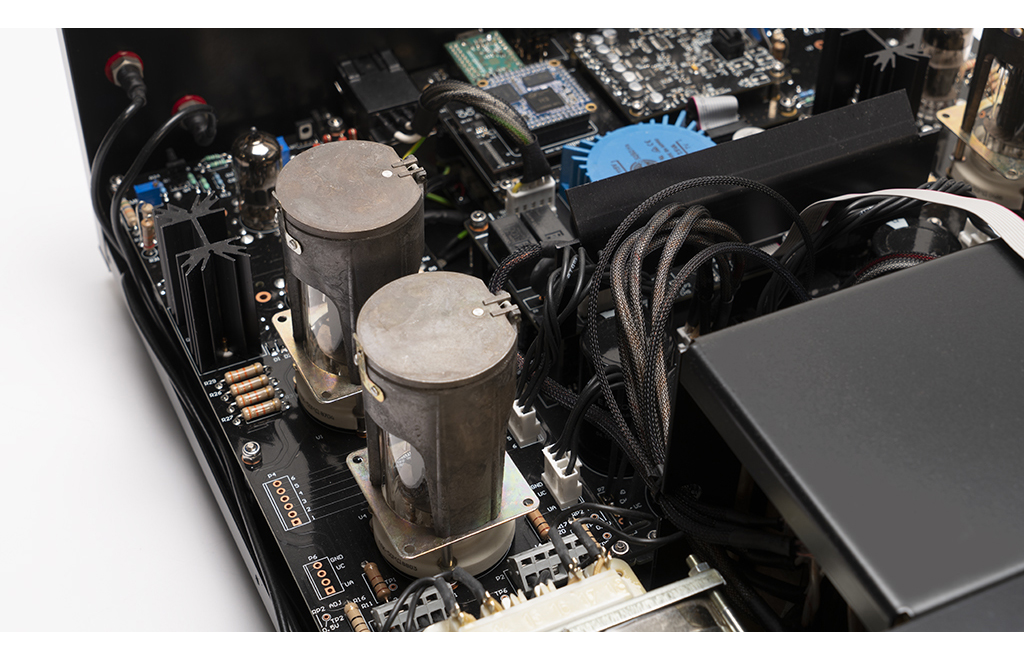 With everything on one chassis (especially if you get digital and analog sections built-in), just the money you’ll save on cables will pay for half of your Enyo. In addition to the cash saved, it’s good for your mental health as well. You won’t have to agonize over power cords and interconnects either, or synergy between your amplifier, DAC, and phono preamplifiers. That’s why we like integrated amplifiers so much. The Enyo is all music and no bother – it’s the perfect houseguest.
With everything on one chassis (especially if you get digital and analog sections built-in), just the money you’ll save on cables will pay for half of your Enyo. In addition to the cash saved, it’s good for your mental health as well. You won’t have to agonize over power cords and interconnects either, or synergy between your amplifier, DAC, and phono preamplifiers. That’s why we like integrated amplifiers so much. The Enyo is all music and no bother – it’s the perfect houseguest.
Interacting with our readers via email and messenger, we’re finding more people that love music that don’t necessarily want to become audiophiles. There are plenty of people that buy sports cars that neither take their car to track days nor spend hours on the internet trying to justify their purchases. An audience of music lovers discerning enough to tell the difference but not utterly obsessed with the gear is silently growing offline. This may be a somewhat heretical perspective for the hard-core audiophiles in the audience, but this time, it’s not all about you. The Enyo is made for you.
Major performance
That’s not to say that the Enyo doesn’t have serious audiophile cred. Removing the cover to take an internal photo reveals beautiful workmanship and premium parts throughout. From the custom-made C-core transformers to the metal cages purpose-built to shield the output tubes from vibration and damage – this amplifier is built to last with novel engineering. The Russian Military GU-50 tubes are all biased automatically and are plentiful on eBay.
A lengthy discussion with Rumen Atarski, the designer and principal of Thrax, reveals more of the intricacy that is inside the Enyo. He has borrowed heavily on the design and manufacturing expertise used in their flagship components to create an approachable masterpiece for those wanting top-quality sound yet still pay attention to the bottom line.
Much of the listening for this review came with our pair of Dynaudio Confidence 20s (with and without a six-pack of REL S/510 subwoofers) to excellent result. Yet, with the Focal Stella Utopias still here for a little while and the Sonus faber Stradivari’s in the main room, the test drive begs to be taken, especially considering the 92db/1-watt sensitivity of the Strads and the 94db/1-watt sensitivity of the Stella’s. Anyone listening to music at less than ear damaging levels could live happily ever after with an Enyo as the core component – it has more than enough nuance and resolution. After living with these two in the system, there’s no speaker I wouldn’t pair the Enyos with.
Setup and interaction
The full-boat Enyo is easier to set up than a Sonos. Plug it in, go through the menus and play music. If you check the phono stage option, your dealer will preset the onboard, solid-state phono section for your cartridge’s loading, and you merely select MM or MC from the menu. Thrax suggests bringing it back to your dealer for resetting impedance, should your tastes in phono cartridges change dramatically. Still, if you are a vinyl lover with multiple arms/cartridges, etc., you’ll probably buy an outboard phono stage anyway. (and Thrax has a very nice one…)
Everything else is available, including three RCA and one XLR line-level input, so if you do choose to expand your system, you’re covered. The DAC section is derived from the circuitry in Thrax’s Maximinus DAC and is on a separate card. When new digital functionality is developed, your Enyo will not be obsolete. It decodes everything, including DSD, and the network board works with DLNA and AirPlay wirelessly. Roon-ready certification is all but done and will further add to the functionality of the Enyo. You can read the fine details and the rest of the tech bits here, at the Thrax site.
Sonically speaking
Because this is a tube amplifier, it requires about 30 minutes to fully warm up, stabilize, and open up sonically. Atarski tells us that the ECC88 (6922/6DJ8) input tube “defines the sound of the amplifier, and they use Phillips, Tesla, and Tungsram as they are widely available.” He also tells us that a NOS Telefunken will bring the unit to a different level. These are available, but the best ones are about $300 – $550 if you can find them.
The Enyo sounds great with the factory-installed tubes, so we don’t want to insinuate that you must buy a $500 tube, but now that the thought is planted, we’ll have to call our friend Kevin Deal at Upscale Audio to get our hands on one. We’ve already found two sets of GU-50s on eBay for backup, as Atarski claims 1000 – 2000-hour tube life. These tubes were originally used in Russian MIG fighters, so they are mechanically very robust. It’s also important to note that the power tubes are biased automatically, so you will not have to bother with that aspect of tube amplifier ownership.
The overall character of the Enyo is open, dynamic, and dimensional. Where EL34 based amplifiers tend to be a bit larger, fatter, and perhaps more tonally saturated, with KT88/6550 based power amplifiers more dynamic but lacking in the ultimate inner detail, this amplifier walks a fine line.
Regardless of your musical taste, this one is easy to warm up to – pun intended. It is incredibly dynamic, and with the Sonus faber speakers and the Focals, they are both so efficient, the Enyo can play really loud. The Enyo has the body you associate with tube electronics, harmonically rich, but not overdone, listening to vocals and acoustic instruments. Listening to Todd Rundgren’s “Honest Work,” with 16 tracks of overdubbed vocals, the sound is spacious and engaging.
Switching the program to Jeff Beck’s Live at Ronnie Scotts and turning the volume way up shows off the ability of this amplifier to remain very composed with this densely packed recording, allowing the audience participation to fold in and out of the mix. Tal Wilkenfield’s rapid-fire bass solo leaves no room for lack of bass control – and again, the Enyo excels. Yet listening to some raw, demo mixes of early DEVO tracks not only keeps things in perspective, but the Enyo’s high resolving power stops this from sounding like a cassette tape. In the end, an incredibly robust 50-watt per channel amplifier that used within the limits of its capability delivers stunning sound.
Spinning some vinyl
As hinted at, the phono stage in the Enyo is excellent, albeit limited in functionality. However, this keeps in with the nature of this product. Suppose your vinyl involvement goes beyond a modest LP collection and turntable. In that case, you will probably want to order your Enyo without the phono board and use your favorite outboard phono stage. Or, if you start out as a novice vinyl enthusiast and decide to make a significant upgrade later, the onboard phono is perfect for a second table.
Excellent results were obtained using the Denon 103r, one of audio’s best values in a modestly priced/high-performance MC cartridge. The synergy was fantastic, and though the phono board is solid-state, its performance within this amplifier is excellent. The noise floor is very low, and the soundstage presented is large in all three dimensions. However, it is not to the level of performance that going up against the onboard DAC with high-resolution material will have you gasping for breath.
But again, our experience shows those dabbling in vinyl tend to buy a fairly modest turntable and a few hundred records, tops. This is precisely the end-user that will benefit the most from the built-in phono card. Convenient, good sound, and very reasonably priced. All in one box.
A winning combination
What really puts the Enyo in a class by itself is its ability to be a high-performance, single box solution. I’ve purchased the review sample to be one of our reference components; it’s that good. The key to this product is whether it suits your needs. If you’re the music lover that wants a great music system right now or the audiophile that is tired of the chase, then the Thrax Enyo is for you. This is precisely why we chose it as our 2020 Product of the Year in the integrated amplifier category.
Thrax.bg (manufacturer)
Highendbyoz.com (NA distributor)
MSRP: $12,500 (Integrated only) +$1,175 Phono module +$3,500 DAC/streaming module
Peripherals
Analog source Technics SL-1200 GAE/Denon 103r
Speakers Eggleston Nico, Dynaudio Contour 20, Sonus faber Stradivari, Focal Stella Utopia EM
Cable Cardas Clear




